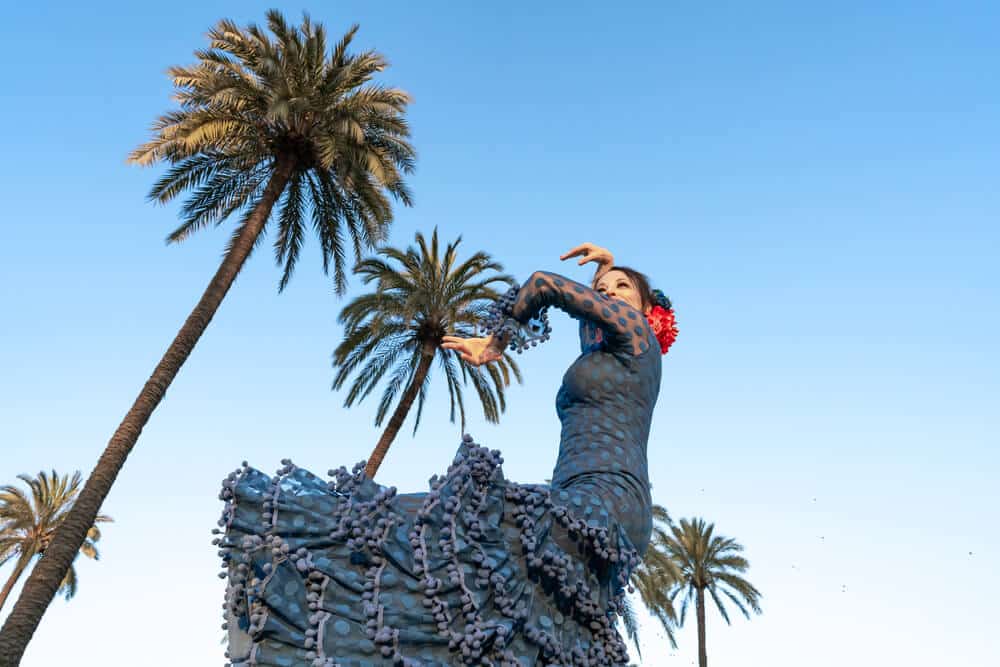The serranas of flamenco are a type of rural-themed song, whose themes mainly allude to the mountains, with shepherds, smugglers, bandits, and muleteers as the protagonists. Hence its name, which refers to the Andalusian mountains, specifically oriented to the Serranía de Ronda.
A song that, in the mid-19th century, enjoyed great popularity, very present in the repertoires of singers performing in theater tablaos. But it is currently falling into disuse due to the constraints established by its melodic structure.
What is the Serrana in Flamenco?
The serrana in flamenco is a flamenco style with a four-verse copla with even rhyme, the first and third composed of seven syllables, and the second and fourth of five syllables. It is complemented by a tercet where the odd verses rhyme, while the second is free.
It is defined as a melodious song, brave with extensive and solemn phrases that requires powerful skills from its singers to be performed. In addition to a harmonious voice being necessary to temper the tercios and extend them as needed.
What is the Origin of the Flamenco Song of the Serrana?
The flamenco song by serranas seems to have derived from an Andalusian folk song, probably lacking in rhythm, which was flamenco-ized in the mid-19th century. However, in the 16th century, there was already a lyrical song known as serranilla that seems to have a very similar literary composition to the serrana. Most authors agree that the melody contains airs of caña, seguiriya, and especially liviana.
Some authors consider that this genre is closely related to the gypsy smugglers, who in the 19th century were known as serranos. However, there are those who believe that they are derived from the Sevillian and Manchegan seguidillas and others claim that the liviana, the calesera, and the serrana, at some point, were the same genre. There are even authors who insist that it is a song from the Cordoba area, but that it could have originated in any of the Andalusian mountain ranges.
In any case, the truth is that Silverio Franconetti is considered the first promoter of the serranas, who established the trend of singing them preceded by the livianas and finished with the seguiriyas de cambio. But great singers such as Villalta, Gallardo el de Morón, Fernando el Herrero, Don Antonio Chacón, Antonio RENGEL, and Antonio Silva “El Portugués” also stand out.
Characteristics of the Serranas
Some of the characteristics that best identify serranas are the following:
Rhythm
The rhythm of the serranas is the same as that of the seguiriyas, which makes us think that, given the antiquity of the serranas, probably, the seguiriya adopted the rhythmic air of the serranas and not the other way around.
Although both styles are very similar in playing, in the serrana there is a tendency to play at a calmer pace than in the seguiriyas. But it could also be considered that the primitive livianas and serranas were performed on a bandolao rhythm, like that of the fandangos from the eastern part of Andalusia, and that they finally took the style of the seguiriyas to achieve a greater flamenco essence.
Lyrics
The verses are of seguidilla and, mainly the liviana, is sung over a complete verse in the same way, composed of four verses with even rhyme, the first and third of seven syllables, and the second and fourth of five syllables. To these, a tercet (macho) is added, with odd verses of five syllables and the second of seven syllables. The same meter as the Castilian seguidillas.
Tonality
Like the rest of the seguiriyas, the serranas take the flamenco mode and are accompanied in the key of E (por arriba), thus distinguishing themselves from the rest of the seguiriyas that are usually accompanied in the position of A (por medio).
In short, the serrana is a kind of caña-polo that assumes the rhythm of the seguiriya. A song of lyrical tone and sound amplitude that was flamenco-ized in the mid-19th century and is considered as the most illustrative style of the birth of flamenco. A brave, powerful, and profound song, with much passion and determination, exceptionally catchy and melodious.




